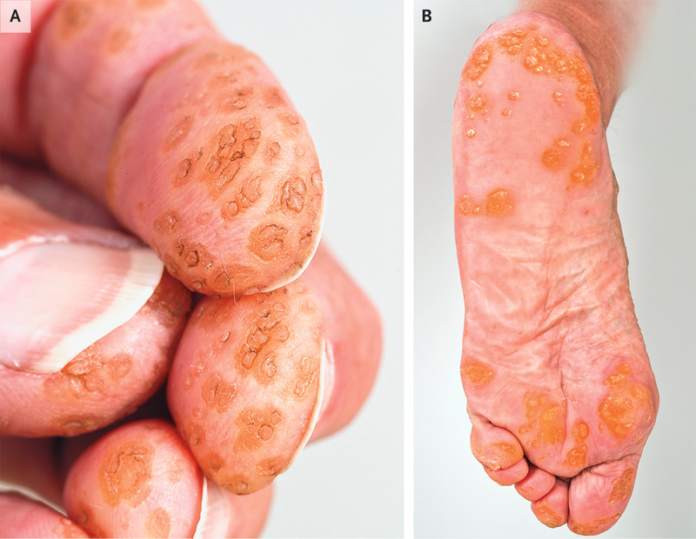Palmoplantar papules – a chronic skin condition
This article describes the case of a 68-year-old female patient who presented to the dermatology clinic with slowly progressing, yellowish, hyperkeratotic papules and plaques on the hands and feet. However, the patient did not complain of any pain, itching, nail changes or skin fragility. Based on clinical and biopsy findings, doctors diagnosed the patient with palmoplantar papules.
The patient’s mother, son and granddaughter had similar skin lesions. Histopathological analysis of the lesion showed hypergranulosis and orthohyperkeratosis. The findings led to the diagnosis of palmoplantar keratoderma. DNA sequencing via next generation sequencing showed a nonsense mutation in AAGAB in both the patient and her son. The AAGAB is responsible for coding the alpha and gamma adaptin binding protein.
The AAGAB mutation is consistent with the diagnosis of autosomal dominant hereditary punctate palmoplantar keratoderma type 1.
Doctors further advised chest radiography, upper endoscopy, colonoscopy, Papanicolaou testing and mammography, all of which did not show any significant findings. Treatment included topical ointments, 40% urea and 20% salicylic acid. This helped with mild reduction of the hyperkeratosis. With treatment, doctors also advised regular cancer screenings.
Palmoplanter keratoderma is a very rare hereditary skin condition that causes irregularly distributed epidermal hyperkeratosis. It is also known as Buschke-Fischer Brauer syndrome and generally affects the palms and soles. However, may vary for each patient.
References
Palmoplantar Papules https://www.nejm.org/doi/full/10.1056/NEJMicm2032907




